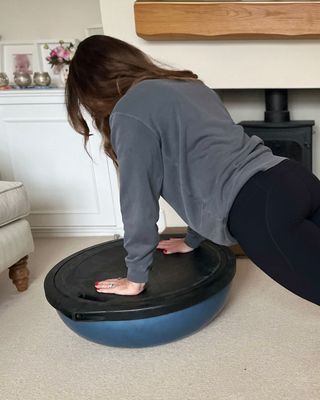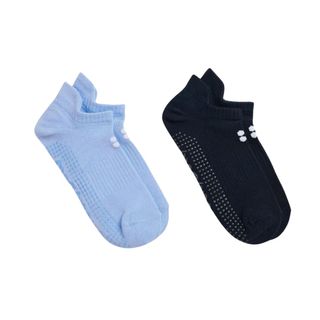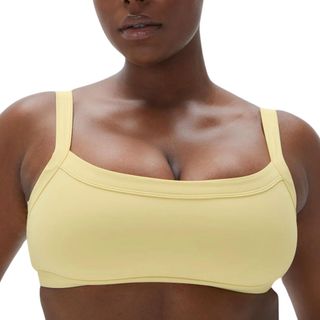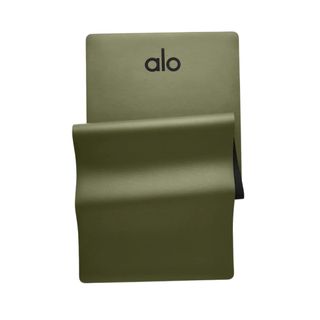Ask anyone who knows me well, and they’ll tell you (with glee) that my balance is rubbish. While I can happily stand on one leg and I always – albeit with limited success – do calf raises while brushing my teeth (surely multitasking at its finest?), add an element of wobble into the equation and I’m like a baby giraffe, limbs all over the place.
But as a Health and fitness writer, I’m also well aware of how vital balance and stability are. Not only does it reduce our risk of injury by helping to prevent falls (not to mention improving our chances of saving ourselves from toppling in the first place), but good balance is also associated with longevity. Research published in the British Medical Journal shows that the ability to balance on one leg for ten seconds is a strong predictor of overall mortality – with those unable to do so at almost double the risk of all-cause mortality within 10 years.
So, when I heard that a Bosu ball can be added to workouts to challenge balance and stability, my interest was piqued. While I can comfortably pass the 10-second one-leg test, I know my core and stability need some work, so – never one to shy away from a challenge – I attempted working out using a Bosu ball (also known as a balance ball or wobble board) every day for a week. Keep scrolling to find out how I got on.
And while we’ve got you, you might also be interested to see what happened when MC UK staffers tried goblet squats, Bulgarian split squats, bodyweight squats and sumo squats every day (yep, we’re fans of squats on this team), not to mention bodyweight lunges, a plank every day, and a core workout every day, too.
I tried a Bosu ball workout every day for a week and I have some thoughts
What is a Bosu ball?
Great question – you’re probably wondering what on earth we’re talking about. But the chances are, you’ll have come across a Bosu ball in the gym.
“A Bosu ball is a piece of equipment designed to create instability to train your balance and core,” explains personal trainer Tejal Patel. “It looks like a Swiss ball cut in half with a flat surface on one side. It can be used with the flat surface facing up or down depending on the exercise, and it utilises the muscles in ways that wouldn’t be possible on stable ground.”
Created by American trainer David Weck in the late 1990s, primarily as a way of developing his balance and core strength following a lower back injury, its name is an acronym for “both sides up.”
@kaytlinkatnissmma
♬ original sound – Kaytlin Katniss Neil
How do you use a Bosu ball?
A Bosu ball is a super versatile, and somewhat underrated, piece of kit. It can be used as is, just by standing on it, or you can incorporate it into your fitness regime in both strength and cardio work.
“The main focus of the ball is improving balance,” says the head coach at London Fitness Mamas, Ben Simpkins. “To begin with, it can be as simple as just standing on the ball with the feet hip-width apart – some people will find that challenging enough. But if you’re already comfortable with this, five exercises I use with clients on a Bosu are squats, lateral lunges, side to side squats, glute bridge and planks.”
Essentially, the premise is that your core will be working harder to support you to remain upright while you move through these exercises.
What are the benefits of working out with a Bosu ball?
“Normally, you’ll see a Bosu ball being used with the dome down and the platform up. But the real benefits come from it being the other way round,” reveals Simpkins.
“Using the ball on a regular basis can strengthen your core (you will never feel a burn like it), leading to improves stability and balance and reducing the risk of injury. It’s great for strengthening a lot of the smaller supportive muscles that won’t get
challenged through normal strength work – such as the ankles – plus, it adds great variety to your workouts.”
Bosu balls are also excellent for developing proprioception, which is essentially our awareness of how our bodies are positioned in and move through space. If you’ve ever been told you’re clumsy or prone to tripping over or dropping things (it’s me, hi), then it’s likely you have poor proprioception.
Studies (such as this one, published in the International Journal of Sports & Physical Therapy) have concluded that training using instability tools can enhance proprioception by challenging balance and stability, improving our neural pathways with regard to body awareness.
I’m hopeful, then, that my ratio of safely washed to smashed plates is about to exponentially increase.
@maiahenryfit
♬ Family Affairs VS Ric Flair Drip by 917Josh – 917Josh
Is it ok to use a Bosu ball every day?
Good news for me – there’s no reason that I can’t workout with the ball every day for a week, subject to how my body feels. As always, I’m told that while stiffness is ok, pain most certainly isn’t.
While we normally wouldn’t recommend working out every single day – rest and recovery are as essential as moving your body for optimal fitness, after all – the NHS website advises aiming for around 75 minutes of vigorous-intensity activity a week or 150 minutes of moderate-intensity activity, so I’m sure to make sure my workouts fit within these guidelines.
And with that, I’m good to go. Keep reading to find out how I got on – and whether I noticed any gains.
I tried working out with a Bosu ball every day for a week – here’s how I got on
Days one to three
Even as someone with limited balance capabilities, I was surprised (and somewhat humbled/embarrassed) by how hard it was to remain upright on the ball the first few times I tried it. Suffice it to say, my family really enjoyed watching it.
As a result, for the first couple of days, I focused on simply attempting to maintain a vaguely wobble-free stance, concentrating on engaging my core and drawing up my under-used pelvic floor muscles. And, once I’d tried concentrating on my breath and not flailing around, I did find I could manage to remain fairly stable.
By day three I was ready to up the ante – but, not wanting to be too adventurous, I heeded Simpkin’s advice about levelling up slowly.
“To progress from standing on the ball, try raising the arms out in front of you,” he says. “Move one arm 90 degrees to the side slowly while the other arm remains in the same position. Then return the arm back to the centre and move the other arm to the 90-degree position. You’ll notice this really ramps up the work your core is doing.”
And that’s an understatement – my lower abdominals have never felt so switched on – and I do a lot of Pilates workouts at home.
The Bosu ball Anna used for her workout challenge
(Image credit: Anna Barrter)
Days four to seven
Annoyingly, by day four I start to notice a dull ache in my lower back – a sure-fire sign that I’m not engaging my core properly in my workouts. So, I decide to switch things up and try some single-leg glute bridges, hoping to give my core (and back) a break.
And incorporating the Bosu ball into my glute bridges did allow me a greater range of movement -something my hips thanked me for, and the it felt like my spine was able to roll up into places I can’t usually reach – win.
That’s not to say that I totally dis-engaged my core – I’d say that core activation was vital for all the moves I tried with the ball, to a greater or lesser degree.
On day five, I tried some plank holds – it’s safe to say that they were tougher than usual, and I had to make a real effort not to sink into my hip flexors and overextend my already hyper-mobile knees, which was a challenge – but it did feel good to work my deep core muscles again.
By the last couple of days, I was really getting to grips with the ball (quite literally!), and call it coincidence, but I definitely noticed I was more balanced and stable during my nightly calf raises. Whether that’s down to being more focussed on my balance or an actual improvement is anyone’s guess, but I’m taking it as a win.

Anna using the Bosu ball during her challenge
(Image credit: Anna Barrter)
The conclusion
Will I continue using a Bosu ball to workout? Well, it certainly brought a much-needed element of fun back to my exercise regime, which can only be a good thing. My next challenge is to get to grips with some squats on the ball – it’s good to have goals, right?
As for whether it made any noticeable improvement to my balance and stability – I’m going to say yes. Even my Barre instructor commented that my balance is excellent last week – and I was pretty chuffed with that. I’m definitely carrying myself with a greater awareness of what I’m doing with my body – and I haven’t smashed a glass in at least a week, which speaks for itself.
Shop MC UK’s essential Bosu ball workout kit now

Sweaty Betty Pilates socks
Never will you be more grateful for grippy socks than during a balance workout – grab yours here.










